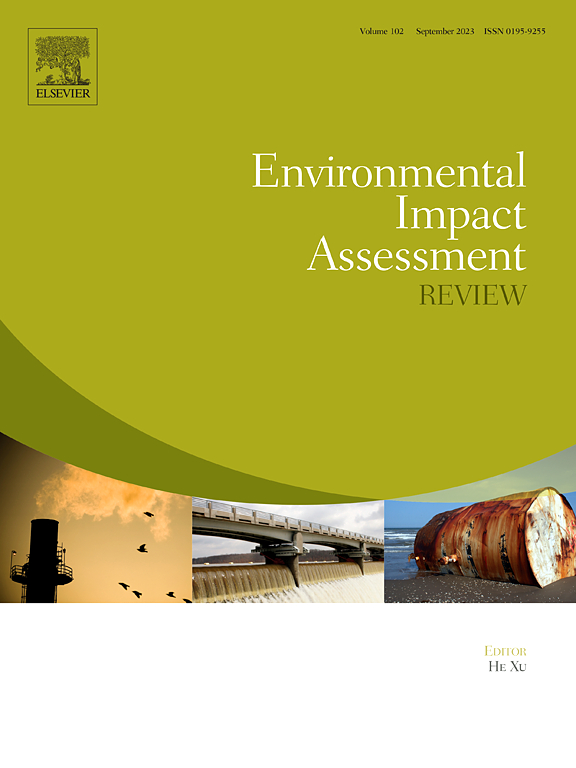可重复使用麻醉口罩与一次性麻醉口罩的环境和经济生命周期可持续性评估
IF 9.8
1区 社会学
Q1 ENVIRONMENTAL STUDIES
引用次数: 0
摘要
在英国,医疗保健产品和服务贡献了62%的国民健康服务的温室气体排放。减少这种影响的一个建议是用可重复使用的设备取代一次性设备(sud)。本研究采用生命周期评估(LCA)和生命周期成本(LCC)方法评估主要由聚氯丁烯和聚异戊二烯制成的可重复使用麻醉口罩的环境和经济可持续性;以及两个一次性口罩,一个由聚氯乙烯(PVC)制成,另一个由热塑性弹性体和聚丙烯(TPE + PP)制成。在11个影响类别中,包括GWP在内的9个类别中,可重复使用的口罩比PVC一次性口罩更便宜,对环境的影响也更小,但只有3个类别(HTP、MAETP和FAETP)的环境影响比TPE + PP一次性口罩低。可重复使用口罩的主要影响因素是再处理阶段,占所有影响类别的70%以上。LCC显示,与TPE + PP口罩(4.99英镑)和可重复使用口罩(4.44英镑)相比,PVC单一口罩的成本最高(5.89英镑)。敏感性分析和情景分析表明,当重复使用次数小于14次时,再处理循环次数对可重复使用口罩的可持续性影响较大,再处理机械的能耗对可重复使用口罩的整体环境影响有显著影响。总之,为了使可重复使用的口罩成为一种有利的选择,制造商和卫生服务提供者需要优化后处理阶段使用的能源和包装,同时确保确定和沟通重复使用做法,即尽量减少循环。本文章由计算机程序翻译,如有差异,请以英文原文为准。
Environmental and economic life cycle sustainability assessment of reusable versus single-use anaesthetic face masks
In the United Kingdom, healthcare products and services contribute 62 % of the National Health Service's greenhouse gas emissions. One proposal to reduce this impact is by replacing single-use devices (SUDs) with reusable devices. This study employs life cycle assessment (LCA) and life cycle costing (LCC) methodologies to assess the environmental and economic sustainability of a reusable anaesthetic mask made primarily of Polychloroprene and Polyisoprene; and two single-use masks one made of polyvinyl chloride (PVC) and one of thermoplastic elastomer and polypropylene (TPE + PP). The reusable mask is shown to be cheaper and have lower environmental impact compared to the PVC single-use mask for nine of the 11 impact categories, including GWP, but has lower environmental impact than the TPE + PP single-use mask for only three categories (HTP, MAETP, and FAETP). The major contributor of the reusable mask's impact is the reprocessing stage, which represents over 70 % of all impact categories. The LCC showed PVC single mask to have the greatest cost (£5.89) compared to TPE + PP mask (£4.99) and the reusable mask (£4.44). Sensitivity and scenario analyses showed that the number of reprocessing cycles greatly influences the sustainability of the reusable mask when the number of reuses was less than 14 and that the energy consumption of the reprocessing machinery had a noticeable influence on the reusable mask's overall environmental impact. In conclusion, to make reusable masks a favourable option, manufacturers and health providers need to optimise the energy and packaging used in the reprocessing stage, together with ensuring that reusing practices i.e. minimum of cycles, are identified and communicated.
求助全文
通过发布文献求助,成功后即可免费获取论文全文。
去求助
来源期刊

Environmental Impact Assessment Review
ENVIRONMENTAL STUDIES-
CiteScore
12.60
自引率
10.10%
发文量
200
审稿时长
33 days
期刊介绍:
Environmental Impact Assessment Review is an interdisciplinary journal that serves a global audience of practitioners, policymakers, and academics involved in assessing the environmental impact of policies, projects, processes, and products. The journal focuses on innovative theory and practice in environmental impact assessment (EIA). Papers are expected to present innovative ideas, be topical, and coherent. The journal emphasizes concepts, methods, techniques, approaches, and systems related to EIA theory and practice.
 求助内容:
求助内容: 应助结果提醒方式:
应助结果提醒方式:


